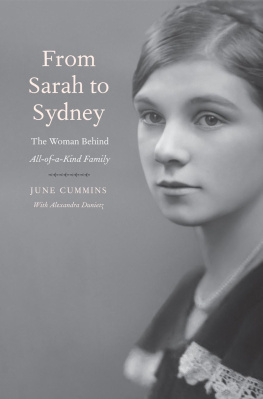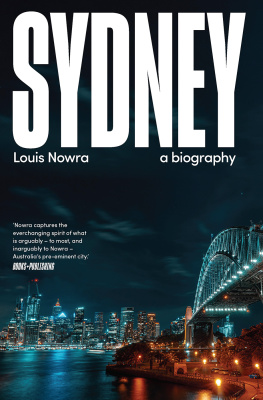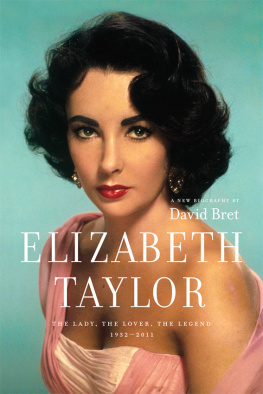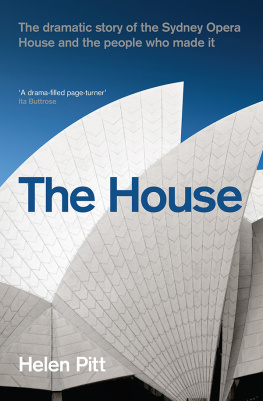From Sarah to Sydney

Copyright 2021 by Jonathan Lewis.
All rights reserved.
This book may not be reproduced, in whole or in part, including illustrations, in any form (beyond that copying permitted by Sections 107 and 108 of the U.S. Copyright Law and except by reviewers for the public press), without written permission from the publishers.
Yale University Press books may be purchased in quantity for educational, business, or promotional use. For information, please e-mail (U.K. office).
Set in Bulmer type by IDS Infotech Ltd.
Printed in the United States of America.
ISBN 978-0-300-24355-0 (hardcover : alk. paper)
Library of Congress Control Number: 2020947837
A catalogue record for this book is available from the British Library.
This paper meets the requirements of ANSI/NISO Z39.48-1992 (Permanence of Paper).
10 9 8 7 6 5 4 3 2 1
Contents
Acknowledgments
THROUGHOUT HER LIFE , June Cummins was ever gracious in expressing her appreciation for others. As the result of my wifes untimely death from ALS, it is left to me to recognize the people who helped make this book a reality. Although June and I often discussed her work, I regret that I do not know the names of all those she would have acknowledged. My omissions do not diminish Junes gratitude.
As a professor of childrens literature at San Diego State University in the late 1990s, June began research into the life and work of Sydney Taylor. She contacted Taylors daughter, Jo Marshall, and they arranged to meet in the summer of 2002. Interested in Junes proposed biography, Jo opened her New Jersey home to June where a trove of Taylors papers and other effects were kept in the basement. Each summer for the next decade, Jo and her partner, Mary-Carol Mason, welcomed June to study Taylors collected diaries, letters, scrapbooks, notes, and manuscripts. Without Jos commitment to and belief in June, this book would not have been possible. Those documents allowed the deep and comprehensive look into Taylors life that forms the core of the book. Thanks also to Susan Baker and Judy Magid for their insights and for providing access to their mothers memoirs, and to the many other generous family members and friends whose interviews pro-vided significant, colorful information about Taylor.
At the end of 2015 when June had become too ill to return to work at SDSU, she devoted herself to working on the book full time. By the follow-ing summer, her disease had advanced to where she could no longer type, but she could give dictation with the use of an eye-tracking communication device. At that point June asked Alix Dunietz if she might help. As a scholar and a friend, Alix became hooked and came to our house for a few hours most days to work with June, rapidly moving from typist to research assis-tant and then collaborator. As a result of Alixs devotion, June was able to finish a draft of the book before her death in early 2018. Alix has since then completed the editing and helped prepare the manuscript for publication. My family and I cannot sufficiently express our gratitude for her role in bringing Junes work to the world.
Junes research trips always included a stop in New York, where she was aided by staff of many institutions, including Ettie Goldwasser, librarian at the YIVO Institute for Jewish Research; Peter Filardo, the Tamiment Archivist at the New York University library; Bibi DrePaul and Charles Oswalt at Morris High School; Esther Zito and Bill Tatton at P.S. 188 on the Lower East Side; and Laura Tosi, librarian at the Bronx County Historical Society. In New York, June was enthusiastically hosted by Naomi and Steven Toder. Naomi also tracked down research materials and brought New York expertise to the book. Thank you also to the staff of the Center for Jewish History, the Little Red Schoolhouse, the Kerlan Collection at the University of Minnesota, and the Veterans History Project Collection at the Library of Congress, especially Megan Harris. The research for this book was greatly aided by the resources of the Northwestern University library, where June was provided borrowing privileges. We are grateful to Susan Addelston and all the Cejwin Camps alumni whose interviews were crucial to understanding that phase of Taylors life and who remain steadfast in their enthusiasm for this project. Paul Zelinsky was of particular help to Alix in visualizing the Lower East Side of a century ago.
Friend and fellow scholar David Chinitz was always ready to discuss with June matters of biography, scholarship, and life in academia. Later, he provided valuable feedback to Alix in revising the initial draft. With her expertise in the world of books and great kindness, Susan Cohen at Writers House was an invaluable supporter. Reidar Hahns photographic talents were vital to preparing the digital images. The professional skills of Sarah Miller and Heather Gold, the books editors at Yale, and their staffs brought the book to fruition.
Many other people supported Junes work along the way. For almost two decades, June commuted between her Chicago home and San Diego because, as she often said, her professorship at SDSU gave her the opportunity to work in a community of scholars. We are grateful to her colleagues at the university, and especially those in Childrens LiteratureJerry Griswold, the late Alida Allison, Joseph Thomas, and Phillip Serratofor building that community in which she was respected and cherished. Thanks also to the department chairsCarey Wall, Sherry Little, Joanna Brooks, and Mike Borgstromwho allowed June a teaching schedule that maintained life-work balance. Mary Garcia always made sure that Junes professional life ran as smoothly as possible and was a dear friend as well. Junes students at SDSU continually inspired her. Many of them were immigrants or the first in their families to attend college. The story of Taylors earlier immigrant generation spoke to them and encouraged them to bring fresh ideas to the classroom.
Beyond SDSU, June was active throughout her career in the Childrens Literature Association. At the annual ChLA meetings, she met good friends and enjoyed the excitement of the exchange of ideas. Thanks go to all of Junes ChLA friends for their support of June and her work, first among them Michelle Martin, Junes conference roommate and confidant through the years.
This book could not have been completed without the skill and dedication of the doctors and staff at Northwestern Memorial Hospital and Junes caregivers who made it possible for her to work nearly every day for the last two years of her life, especially Paulette Booth, Jasmine Booth, and Lissette Livera. We are also grateful for the assistance of Ileane Mindel and the Les Turner ALS Foundation.
June had champions in her parents, Arthur Cummins and the late Eilene Cummins, and in her sisters, Jackie Dimont and Yvonne Venger. Our sons, Jacob, Noah, and Ethan, share Junes love of literature, and as they grew up they too were invested in the insights of her research. Their love, and that of Jacobs wife, Arielle, sustained June throughout the process of writing the book and through her illness.
Finally, thank you to all the Sydney Taylor fans whom June met through the years: your enthusiasm and encouragement remain an inspiration.
Jonathan Lewis
November 2019
From Sarah to Sydney
Introduction
WHO ARE YOU? That was a question frequently asked by fans of the All-of-a-Kind Family series of books in letters to the author, Sydney Taylor. Readers wanted to know which of the five sisters the author might have beenElla, Henny, Sarah, Charlotte, or Gertie. Sometimes they hazarded a guess, wrong as often as not. Because Sydney was an ambiguous name, readers also asked whether the author was a man or a woman. Most thought that a woman must have written the books, but some fans addressed their letters to Mr. Taylor. The third persistent question was whether the stories were true. Children related their own experiences of losing a library book or disliking house-hold chores, spoke of grandmothers who had grown up on the Lower East Side in New York, and confided their own hopes of becoming writers. Seeing themselves in the
Next page









